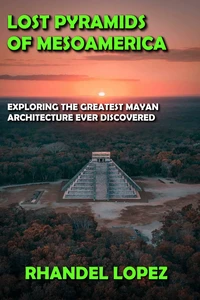Chichén ItzáAlthough many ancient civilizations have influenced and inspired people in the 21st century, like the Greeks and the Romans, none have intrigued people like the Mayans, whose culture, astronomy, language, and mysterious disappearance continue to captivate people today. Chichén Itzá, the most visited and most spectacular of the Late Classic Maya cities, is at the center of the fascination.
In the later years of Maya civilization, Chichen Itzá had been inhabited for hundreds of years. In developing columns and exterior relief decoration, Chichén Itzá probably had over 30, 000 residents at its peak, with a spectacular pyramid, enormous ball court, observatory, and several temples to boast. The sacred cenote at Chichén Itzá, a sinkhole used for Maya rituals surrounding water, is of particular interest.
The Maya regarded it as a primary concern because adequate water was rarely found on the limestone-based Yucatan surface. The underwater archeology conducted in the cenote at Chichén Itzá found that offerings (including people, possibly) were thrown into the sinkhole in honor of the Maya rain deity Chaac. Despite its long history, Chichén Itzá had a relatively short period where it dominated the region, lasting from 800-950 CE.
Nowadays, guides take tourists to one of the temples called the Nunnery for no good reason other than that the small rooms remind them of a nunnery back home.
Chichén ItzáAlthough many ancient civilizations have influenced and inspired people in the 21st century, like the Greeks and the Romans, none have intrigued people like the Mayans, whose culture, astronomy, language, and mysterious disappearance continue to captivate people today. Chichén Itzá, the most visited and most spectacular of the Late Classic Maya cities, is at the center of the fascination.
In the later years of Maya civilization, Chichen Itzá had been inhabited for hundreds of years. In developing columns and exterior relief decoration, Chichén Itzá probably had over 30, 000 residents at its peak, with a spectacular pyramid, enormous ball court, observatory, and several temples to boast. The sacred cenote at Chichén Itzá, a sinkhole used for Maya rituals surrounding water, is of particular interest.
The Maya regarded it as a primary concern because adequate water was rarely found on the limestone-based Yucatan surface. The underwater archeology conducted in the cenote at Chichén Itzá found that offerings (including people, possibly) were thrown into the sinkhole in honor of the Maya rain deity Chaac. Despite its long history, Chichén Itzá had a relatively short period where it dominated the region, lasting from 800-950 CE.
Nowadays, guides take tourists to one of the temples called the Nunnery for no good reason other than that the small rooms remind them of a nunnery back home.

 , qui est-ce ?
, qui est-ce ?